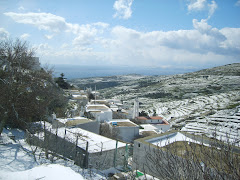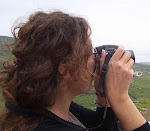
MINOAN SEMINAR
Thursday 15 January 2009, 18.30, Archaeological Society, Panepistemiou 22, Athens
Understanding the Late Prepalatial and Protopalatial Periods in the Mirabello Region of East Crete: Insights from Recent Fieldwork
Tom Brogan
The paper’s primary aim is a presentation of the finds from the recent excavations in Pacheia Ammos by Vili Apostolakou, director of the KD’ Ephoria, which are being studied by the excavator, Phil Betancourt and the speaker. The first site is a small rock shelter with an impressive assemblage of pottery and stone tools that provide a new basis for discussions of late Prepalatial ceramic production and relative chronology in east Crete. The second site, called Pefka, sits in the pine trees on the north side of Richard Seager’s villa in Pacheia Ammos and appears to be a workshop connected with dyeing textiles. The workshop offers a unique illustration of this important Minoan industry and is dated to Middle Minoan II.
Until recently late Prepalatial and Protopalatial remains from the Mirabello and the Isthmus of Ierapetra were known from a small number of sites: Mochlos, Pacheia Ammos, Gournia, Vassiliki and Myrtos Pyrgos. The archaeological sample remains uneven for the region, but one can no longer complain about a lack of evidence. Over the past two decades, American and Greek projects have conducted four intensive surveys of the area (Pseira, Kavousi, Vrokastro and Gournia), of which three have now been fully published and the last in is preparation. Remains of the Early Minoan III/MMI A period have recently been excavated at Mochlos, Pseira, Chysokamino, Kavousi Vronda, Pacheia Ammos, and Priniatikos Pyrgos. The new sample for Middle Minoan II is even larger, and includes finds from Papadiokambos, Mochlos, Underwater Pseira, Kavousi Vronda, Pacheia Ammos, Katalimata, and most recently Chrissi. While none of these sites has revealed the residence of a prepalatial chief or protopalatial ruler (Mochlos being a possible exception), together the excavated remains offer new threads of evidence for a dynamic economy under the direction of an elusive but I believe inescapable local elite. It is this emerging hierarchy and the local economy that I hope to shed light on in the second part of the paper, which examines the finds from Pacheia Ammos in their regional context. The results offer an instructive foil to the more tangible physical remains of Middle Minoan palatial administrations elsewhere on Crete, particularly at Malia and Petras, and a new approach to the puzzling question of which, if any, Cretan Protopalatial administration controlled the Mirabello and North Isthmus.
Πληροφορίες: http://www.minoanseminar.gr




.jpg)




























Δεν υπάρχουν σχόλια:
Δημοσίευση σχολίου